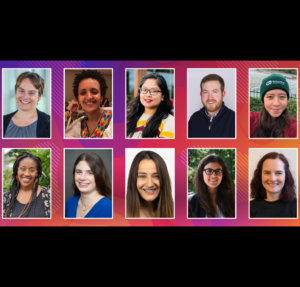Guest post by Tyler Kent. #TAGC16 Shorts are brief summaries of presentations at The Allied Genetics Conference, a combined meeting of seven genetics research communities held July 13-17, 2016 in Orlando, Florida.
Purging harmful mutations is the most common task of natural selection. In non-recombining populations this background selection process represents the “survival of the fittest” in action, but this genetic housekeeping also lowers a population’s genetic diversity. While traditional methods for modeling background selection typically assume that all harmful mutations have the same effect on fitness and undergo the same strength of selection, a new method presented at The Allied Genetics Conference aims to more accurately understand this process and its effects.
By considering the total fitness cost of harmful mutations in an individual, Ivana Cvijović (Harvard University) showed she can infer whether individuals in a sample were recent ancestors of each other or instead came from more distant historic lineages. When considering an individual’s fitness cost, its ancestor would have had a higher fitness that can be found by incorporating both the costs of all possible mutations and the chance of finding an ancestor at the correct fitness level. The inferred lineage structure can then reveal when an individual in the past had accumulated too many harmful mutations—a bubble of fitness cost which burst when it had become too unfit to survive.
When extended back in time, this bubble coalescent method can reconstruct the genealogy of populations that have experienced background selection of varying strengths and can accurately estimate their current diversity. Cvijović hopes that her method will help us to understand more of the nuances of background selection, many of which are lost using current methods.

The inference of fitness states of an individual’s ancestors, and the genealogy that results. Courtesy Ivana Cvijovic.
TAGC Program Number P367:
The genetic diversity of a population experiencing selection.
Ivana Cvijovic; Benjamin Good; Michael Desai
Harvard University, Cambridge, MA
About the author: Tyler Kent is a graduate student in the Wright Lab at the University of Toronto studying the evolution of genetic load. Follow him on twitter at @tylervkent.













